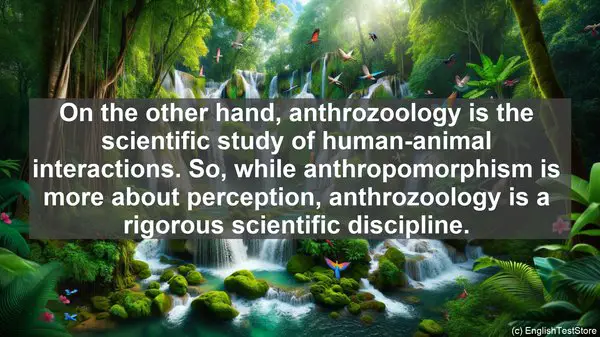Introduction
Today, we’re going to delve into the fascinating world of comparative cognition. As you explore this field, you’ll encounter numerous terms that may seem similar but have distinct meanings. In this lesson, we’ll unravel the top 10 commonly confused words in comparative cognition, ensuring you have a solid foundation for your studies. Let’s get started!
1. Anthropomorphism vs. Anthrozoology
One of the first distinctions to grasp is between anthropomorphism and anthrozoology. While both involve the study of animals, anthropomorphism refers to attributing human characteristics to them, often in a metaphorical sense. On the other hand, anthrozoology is the scientific study of human-animal interactions. So, while anthropomorphism is more about perception, anthrozoology is a rigorous scientific discipline.
2. Homology vs. Homoplasy
Homology and homoplasy are terms often encountered in comparative anatomy. Homology refers to similarities in structures or traits due to shared ancestry. For example, the wings of a bat and the arms of a human are homologous, both derived from a common ancestor’s forelimb. Homoplasy, however, refers to similar traits arising independently, often due to environmental pressures. The wings of a bird and the wings of a butterfly are an example of homoplasy, as they serve similar functions but have different origins.

3. Innate vs. Learned
When examining animal behavior, it’s crucial to differentiate between innate and learned behaviors. Innate behaviors are those that an organism is born with, often genetically programmed. Examples include reflexes or certain instinctive actions. Learned behaviors, on the other hand, are acquired through experience or observation. They can vary greatly between individuals or populations and may change over time.
4. Stimulus vs. Response
In the context of animal behavior, a stimulus is any external or internal factor that elicits a response. For instance, a sudden loud noise can be a stimulus, causing an animal to startle. The response, in turn, is the organism’s reaction to that stimulus. It can be a simple action or a complex behavioral sequence. Understanding the relationship between stimuli and responses is fundamental in studying animal behavior.
5. Proximate vs. Ultimate
Proximate and ultimate causation are two levels of analysis in behavioral biology. Proximate causation focuses on the immediate factors that trigger a behavior, such as hormonal changes or sensory stimuli. Ultimate causation, on the other hand, looks at the evolutionary reasons behind a behavior. It considers factors like reproductive success or survival advantages. Both levels are essential for a comprehensive understanding of behavior.
6. Altruism vs. Cooperation
While altruism and cooperation both involve individuals working together, there’s a subtle distinction. Altruism refers to a behavior that benefits others at a cost to oneself. It’s often seen in situations where individuals are closely related, as it can still indirectly benefit one’s own genes. Cooperation, on the other hand, involves individuals working together for mutual benefit, often without any self-sacrifice. Both behaviors have been extensively studied in the realm of social behavior.

7. Classical vs. Operant Conditioning
Classical and operant conditioning are two fundamental forms of learning. Classical conditioning involves associating a neutral stimulus with a biologically significant one, resulting in a learned response. Think of Pavlov’s famous experiment, where a bell ringing became associated with food, causing dogs to salivate. Operant conditioning, on the other hand, focuses on the consequences of behavior. Rewards or punishments shape the likelihood of a behavior being repeated. Both forms of conditioning play a crucial role in shaping behavior.
8. Extinction vs. Extinguishment
In the context of learning, extinction and extinguishment refer to the reduction or elimination of a learned behavior. Extinction occurs when a previously reinforced behavior no longer receives the expected reward, causing it to diminish over time. Extinguishment, on the other hand, refers to the active process of intentionally reducing a behavior through specific training techniques. Both processes are vital in behavior modification.
9. Convergent vs. Divergent Evolution
Convergent and divergent evolution describe patterns seen in the evolution of species. Convergent evolution occurs when unrelated species independently evolve similar traits due to similar environmental pressures. For example, the streamlined bodies of dolphins and sharks are a result of convergent evolution. Divergent evolution, on the other hand, involves species diverging from a common ancestor and developing distinct traits. The beaks of Darwin’s finches are a classic example of divergent evolution.
10. Eusociality vs. Solitary
Eusociality and solitary behavior represent two extremes in social organization. Eusocial species, like ants or bees, live in large colonies with a division of labor and overlapping generations. Solitary species, on the other hand, lead independent lives, often only coming together for mating. Eusociality is characterized by complex social structures and cooperative care for offspring, while solitary species have a more independent lifestyle. Understanding these social systems provides insights into the diversity of animal societies.
